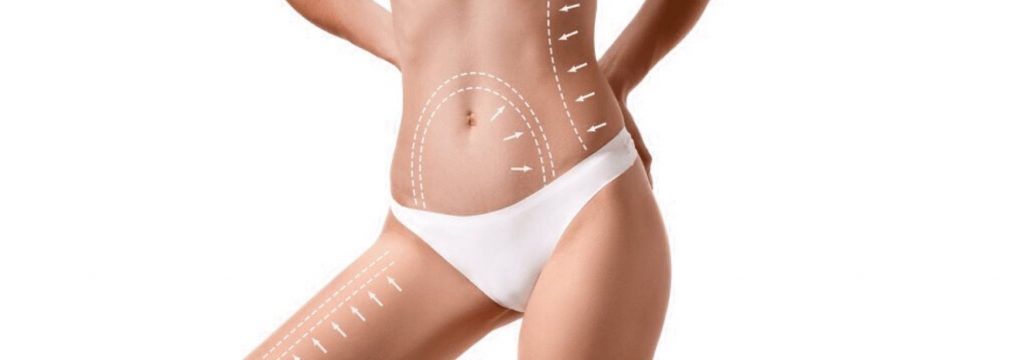- Address: 91 Queen St, Brisbane City QLD 4000 Australia
- Phone:(07) 3184 4925

Liposuction

Liposuction is a procedure that can help sculpt the body by removing unwanted fat from specific areas, including the abdomen, hips, buttocks, thighs, knees, ankles, upper arms, chin, cheeks and neck. During the past decade, liposuction, which is also known as liposculpture, has benefited from several new refinements. Today, a number of newer techniques, including ultrasound-assisted lipoplasty (UAL) and the tumescent technique, are helping many plastic surgeons to provide selected patients with more precise results and quicker recovery times. Although no type of liposuction is a substitute for dieting and exercise, liposuction can remove stubborn areas of fat that don’t respond to traditional weight-loss methods.
You must have realistic expectations about what the procedure can do for you. It’s important to understand that liposuction can enhance your appearance and self confidence, but it won’t necessarily change your looks to match your ideal. Before you decide to have surgery, think carefully about your expectations and discuss them with your surgeon.
The best candidates for liposuction are normal-weight people with firm, elastic skin who have pockets of excess fat in certain areas. You should be physically healthy, psychologically stable and realistic in your expectations. Your age is not a major consideration; however, older patients may have diminished skin elasticity and may not achieve the same results as a younger patient with tighter skin.
Planning your liposuction surgery
In your initial consultation, your surgeon will evaluate your health, determine where your fat deposits lie and assess the condition of your skin. He will explain the body-contouring methods that may be most appropriate for you. For example, if you believe you want liposuction in the abdominal area, you may learn that an abdominoplasty or “tummy tuck” may more effectively meet your goals; or that a combination of liposuction and a tummy tuck would be the best choice for you. Similarly, liposuction is often combined with breast reduction surgery.
What’s involved with the liposculpture procedure
Liposuction is performed in hospital. Smaller volume liposuction is usually done on an outpatient basis, for reasons of cost and convenience. However, if a large volume of fat is to be removed, or if the liposuction is being performed in conjunction with other procedures, an overnight hospital stay may be required.
If only a small amount of fat and a limited number of body sites are involved, liposuction can be performed under local anaesthesia, which numbs only the affected areas. However, most patients prefer general anaesthesia, particularly if a large volume of fat is being removed. The time required to perform liposuction may vary considerably, depending on the size of the area, the amount of fat being removed, the type of anaesthesia and the technique used.
Liposuction is a procedure in which localised deposits of fat are removed to re-contour one or more areas of the body. Through a tiny incision, a narrow tube or cannula is inserted and used to vacuum the fat layer that lies deep beneath the skin. The cannula is passed through the fat layer, breaking up the fat cells and suctioning them out. This may be preceded by the use of an ultrasound probe, which is used to first emulsify or break down the fat.
What are the risks of liposuction/liposculpture?
Liposuction is normally very safe. Large volume liposuction of more than 5 litres carries more significant risk with greater fluid shifts. Overweight people are also more prone to deep vein thrombosis.
Specific complications include contour problems and disturbance of sensation in the treated area. Numbness generally settles with 6 weeks of surgery. Cellulite is not improved by liposuction.
The scars from liposuction are small and strategically placed to be hidden from view. Contour problems are usually minor but may require a “touch up” if they persist. Imperfections in the final appearance are not uncommon after liposuction. The skin surface may be irregular, asymmetric or even “baggy”, especially in the older patient.
For more information regarding liposculpture at our cosmetic surgery in Brisbane, feel free to contact us at any time.
After your liposuction surgery
After surgery, you will likely experience some blood/fluid drainage from the incisions. To control swelling and to help your skin better fit its new contours, you will be fitted with a snug elastic garment to wear over the treated area for a 2 – 3 weeks.
Don’t expect to look or feel great right after surgery. You may experience some pain, burning, swelling and temporary numbness. Pain can be controlled with medications prescribed by your surgeon, though you may still feel stiff and sore for a few days. It is normal to feel a bit anxious or depressed in the days or weeks following surgery, however this feeling will subside as you begin to look and feel better.
Healing is a gradual process. You will be encouraged to start walking around as soon as possible to reduce swelling and to help prevent blood clots from forming in your legs. You will begin to feel better after about a week or two and you should be back at work within a few days following your surgery.Activity that is more strenuous should be avoided for about a month as your body continues to heal. Although most of the bruising and swelling usually disappears within three weeks, some swelling may remain for six weeks or more. Massage is beneficial and is part of the post-operative treatment protocol. Your surgeon will schedule regular follow-up visits to monitor your progress.
Contact Staff: